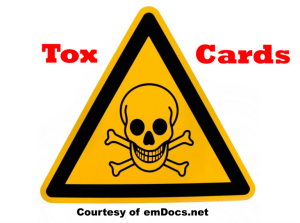Today on the emDocs cast with Brit Long, MD (@long_brit) and Manpreet Singh, MD (@MprizzleER) we cover three posts: cytokine storm in the setting of COVID-19, methylxanthine toxicity, and fracture terminology.
Part 1: Cytokine Storm and COVID-19
Key Points from the Podcast and Post:
- Cytokines are the signals from our cells to our bodies notifying us that we are under attack. If the cells release an appropriate amount of cytokines, an appropriate immune response can begin against the invading pathogen, giving the best chance of recovery. If there is an inappropriate or excessive cytokine release the systemic effects could be fatal.
- Cytokine Storm is a serious systemic complication of viral infections such as COVID-19, bacterial infections, rheumatologic disorders, and cancer therapies.
- Up to 15% of the population can be predisposed to cytokine storm syndrome due to infection Early detection of cytokine storm syndrome helps triage patients appropriately and begin treatment early which improves overall mortality.
- Beware VTE and cardiac dysfunction!
- Consider ordering the labs tests included in the H score along with an IL-6, CRP and LDH in admitted patients with cytokine storm.
- Treatment of critical patients with potential for cytokine storm secondary to COVID-19 are being studied but follow the previously understood treatment regimen including anti-viral therapy, immune-modulation, anti-coagulation, and steroids.
Part 2: Methylxanthine Toxicity
Key Points from the Podcast and Post:
- Methylxanthines include caffeine. The mechanism of action is both as an adenosine antagonist and cAMP phosphodiesterase inhibitor.
- Methylxanthine toxicity affects nearly every organ system, including GI, CV, neurologic, MSK, and metabolic systems. Chronic theophylline toxicity should be considered in patients with altered mental status, vomiting, and means of exposure.
- Management of dysrhythmias involves calcium channel and beta-blockers.
- Seizures should be treated with benzodiazepines.
- Management of hypotension involves fluid resuscitation, alpha agonists, and beta-blockers.
- Consider MDAC if able to tolerate enteral intake, and hemodialysis for severe cases.
Part 3: Fracture Terminology
Key Points from the Podcast and Post:
- Describe if open or closed.
- Describe the fracture location along the bone.
- Describe the fracture morphology.
- Describe any displacement.
- Describe any shortening.
- Describe any angulation and rotation.









